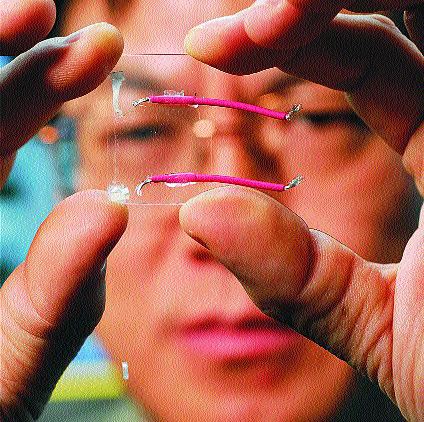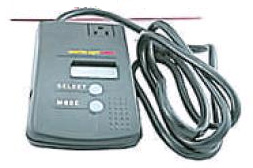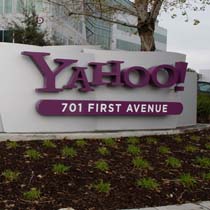David Lieberman
USA Today

Store manager Christopher Borghese arranges Blu-Ray selections at a Blockbuster in Gahanna, Ohio, last year. HD DVD remains popular, too.
NEW YORK — Peace may be at hand in the nearly three-year battle to provide HDTV owners with an affordable DVD player that can handle any movie that shows off high-def’s vivid video and rich surround sound.
During the last six weeks, Hollywood studios, consumer electronics companies and retailers have given Sony’s Blu-ray format a seemingly insurmountable edge over its rival high-definition DVD format: Toshiba’s HD DVD.
This week Best Buy, the No. 1 consumer electronics chain, said that it will feature Blu-ray players and software and will advise customers to buy them instead of HD DVD products.
Separately, online rental firm Netflix said that it will buy only Blu-ray discs and phase out HD DVDs by year’s end.
Both companies acted after Warner Bros., the No. 1 video distributor, announced that beginning in May it will drop HD DVD and sell its high-def movies and TV shows only on Blu-ray — joining a group that includes Disney, Fox, Lionsgate and Sony’s film studio.
“Warner’s jump was the last straw to break the camel’s back,” says Walt Disney Studios Home Entertainment President Bob Chapek. “The format war’s over.”
Well, maybe. The HD DVD camp — which includes Universal, Paramount, DreamWorks Animation and Microsoft— hasn’t raised a white flag yet.
But it also isn’t predicting victory.
“There are a lot of other product areas where different formats coexist,” says Jodi Sally, vice president of marketing for Toshiba’s digital AV group. “Look at gaming (where Nintendo and Microsoft compete with Sony). There are discs that won’t play in each other’s machines. Apparently that is the current scenario” for high-def DVDs.
Her view chills executives and technophiles who say that most consumers won’t buy two machines — or a pricey combo player — so they can enjoy HD versions of Disney’s Ratatouille as well as DreamWorks’ Shrek the Third, or Sony’s Spider-Man and Paramount’s Mission: Impossible.
“We interview consumers, and over the last year 60% didn’t want to buy either format until there was a clear winner,” says Envisioneering Group director Richard Doherty.
With consumers reluctant to buy into the new technology, Hollywood studios are left selling conventional DVDs — which have grown tired after 12 years in the market. Spending on sales and rentals last year fell 3.1% to $22.9 billion in 2007, according to trade magazine Video Business.
That also opens the possibility that HDTV owners will wait until they can download the movies they want.
Comcast CEO Brian Roberts demonstrated at last month’s Consumer Electronics Show in Las Vegas a cable Internet technology his company will begin rolling out this year that makes it possible to download a high-def movie in four minutes.
There’s still time for high-def DVDs to take off.
“There are an awful lot of pieces that have to come together” before downloading becomes practical, says Stephen Baker, vice president of industry analysis at research firm NPD. “This stuff takes a lot longer to get started than we think it should. But once it gets started, it catches on a lot faster than we think it will.”
With the window of opportunity for high-def DVDs starting to close, though, analysts say that retailers may soon pick a winner.
“If you’re Best Buy, you want people to keep coming to your store for the packaged media — not just the player,” Doherty says. “Same thing with Target. And there’s no exit strategy for (the DVD format split) that is consumer-friendly. The one who’ll be left holding the bag is the retailer.”
Here’s where things stand:
Blu-ray and content
The Blu-ray camp says consumers buy movies — not formats — and will go with whoever has the best selection.
If it’s correct, then there’s no contest: Now that Warner has signed on, studios backing Blu-ray accounted for more than 66% of last year’s DVD rentals and sales.
Disney and Panasonic are making that point to consumers, and featuring Blu-ray’s gee-whiz high-def pictures and bonus features, in a show-and-tell presentation at eight major shopping malls called “Disney’s Magical Blu-ray Tour.” The studio also will promote the technology in October when it releases its first classic animated flick on Blu-ray: Sleeping Beauty.
Viewers less interested in family-friendly fare may be swayed by the leading distributor of porn DVDs — an important, if often overlooked, force in home video.
“We’re going to be phasing out HD DVD and going straight to Blu-ray,” says Ali Joone, founder of Digital Playground, which says it accounts for more than 80% of the adult videos sold in high-def.
It wasn’t just because of Warner. The makers of the software that Digital Playground uses to prepare its DVDs and menus said last month that it will continue to develop enhancements for Blu-ray but not for HD DVD.
“It’s going to be much more painful to stay in the HD DVD arena than going into the Blu-ray arena,” Joone says.
HD DVD and price
But the HD DVD camp says Blu-ray supporters pay too much attention to Tech Alley and not enough to Main Street.
“The real competitor here is that consumers are satisfied with DVD,” says Toshiba’s Sally. “It’s really price that’s the motivating factor for consumers” to buy either high-def DVD format.
To address that, and to try to create a groundswell of consumer support for HD DVD that Hollywood and retailers can’t ignore, Toshiba on Jan. 13 slashed the price of its high-def disc players.
The least expensive one costs $120 — about $200 less than the cheapest Blu-ray model — and comes with seven free HD DVDs; The Bourne Identity and 300 come with the unit, and consumers can pick five others from a list of 15.
“I know for a fact that since we made our price move, our weekly sales are twice the rate of the weekly average that they were in 2007,” Sally says.
Will consumers consider that money badly spent when they start to see more high-def movies released on Blu-ray?
Not to worry, she says.
The studios will continue to release all of their movies as conventional DVDs. And HD DVD players — as well as Blu-ray ones — use a technology that can convert them to what she says is almost high-def quality.
That may work just fine for people who don’t have elaborate home-theater systems.
“If you have a 37-inch TV, you probably wouldn’t see a huge amount of difference because the screen size is so small,” says Paul Erickson, director of DVD and high-def market research at research firm DisplaySearch. “As you start getting to 46-inches, sure, you can tell a difference.”
But Blu-ray supporters say that it’s a dead-end strategy to sell a high-def DVD player as a jazzy conventional DVD player.
“If we’re trying to build a business, then it’s going to be built primarily on people understanding the benefits of a high-def experience,” says Sony Chief Marketing Officer Andrew House. “We’re focused on delivering the very best experience for the consumer.”
They add that prices for Blu-ray players will fall as the market shifts from early adopters who pay top dollar for cutting-edge toys to ordinary consumers looking for value.
“If people are price-sensitive about the player, they might want to wait a little while,” says Pioneer Home Entertainment Group’s Andy Parsons, who’s also chairman of the Blu-ray Disc Association Promotions Committee.
Consumer confusion
Content and price won’t matter if consumers are frozen by their inability to figure out each format’s technological strengths and weaknesses.
Blu-ray supporters say their format wins in delivering no-compromises video and audio.
Discs can handle long movies and abundant bonus features; each disc holds 50 gigabytes of data vs. 30 GB for HD DVD and less than 10 GB for a conventional DVD. Since a two-hour high-def movie can use up 25 GB, that leaves more room on Blu-ray for bonus features and games.
“It’s the best-quality picture out there, and the boundless data capacity makes this a future-proof technology,” House says. “HD DVD is version 1.1, and Blu-ray is 2.0.”
But Blu-ray’s best customers are gamers: Sony’s PlayStation 3 comes with a Blu-ray player built in. PlayStations account for more than 85% of the Blu-ray players sold.
Those looking for a stand-alone Blu-ray player have to decide what features they want.
Older models won’t accommodate picture-in-picture, a new feature that Blu-ray calls BonusView. Discs and players that offer BonusView can, for example, show a movie director in the corner of the screen commenting on a particular scene.
Buyers also will have to wait until later this year if they want a player with an Internet connection capable of handling features Blu-ray calls BD Live.
Supporters say that’s no big deal. All players handle the main event: movies.
“Once we get to the mass market, which is where I think we’ll be in the next couple of years, all of that (confusion) will be behind us,” Chapek says. “Then, the people who are less technophilic will not have to deal with it.”
HD DVD backers say there’s no need to wait. Their format “has been a consistent specification since Day 1,” Sally says. For example, all players have Internet ports. They enable users to download cellphone ring tones, send friends favorite scenes from a movie, play games or see material on a studio’s website.
Unlike with Blu-ray, there’s no region coding. Overseas travelers can buy and play any HD DVD they find.
Most HD DVD discs also have a conventional DVD on the flip side, making them playable on ordinary DVD players including on laptops and automobile backseat entertainment systems.
Despite the differences in the formats, and the complications with the launch of a new generation of DVDs, both sides agree that consumers are ready for a new video technology.
“We’re seeing a strong sea change, a generational shift, where people are embracing high definition,” House says. “Once you’ve seen that kind of picture, you can never go back.”











